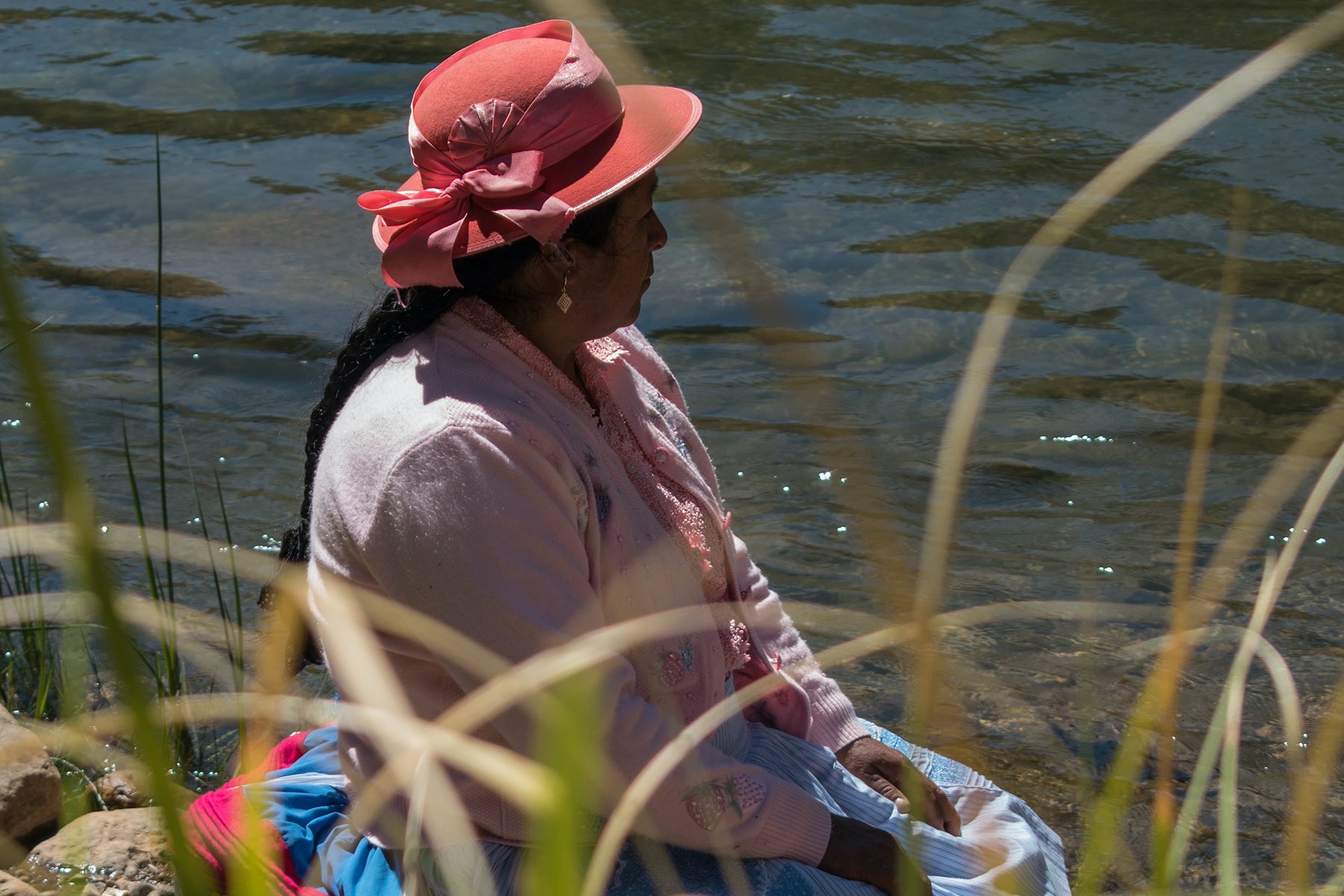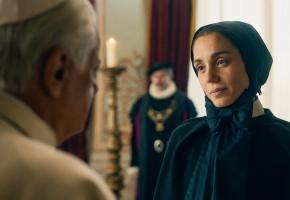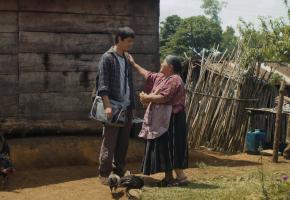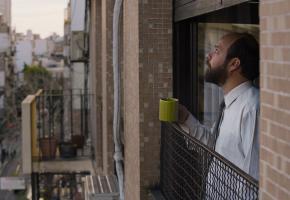Magda Surichaqui Cóndor was a teenager when soldiers arrived in her small Peruvian village in 1984. Sent to root out members of the Shining Path, soldiers of the Peruvian army used their sweeping powers to rape and humiliate local women, leaving them shunned by their own communities, often with children in tow. Three decades later, Magda has joined a number of other women in bringing charges against their abusers. With stunning cinematography and respectful intimacy, Patricia Wiesse Risso accompanies Magda and her friends as they reminisce over their youth and their lives since, whilst they sit and chew coca leaves, peeling potatoes and spinning wool. Mujer de Soldado is a deeply moving picture of female solidarity that finally provides space for the dignity of these women's experiences that has long been denied.
LatinoLife: At the centre of the documentary lie these very intimate conversations between four women wddho have suffered from sexual violence and have given birth to ‘hijos de soldados’ (soldiers’ children). How did you manage to build such trust and intimacy with these women in the town of Manta?
Patricia Wiesse Risso: I first started writing about Magda fifteen years ago when I was a television reporter. However, it was not until 2016 that I first met the women in person. I work for an NGO called the ‘Instituto de Defensa Legal (IDL)’ (Institute for Legal Defence) and the lawyers from the institute were representing the women of Manta in their court case. The victims therefore travelled for up to five hours from the district of Manta to Lima to prepare their testimonies. It was during these meetings that I first met Magda and the other women in person, but only from afar. There were many restrictions in place for those who wanted to speak to the women or interview them. For example, you could only refer to the women using their initials and filming during the trials was banned.
So, although I had first conceived the idea for this project fifteen years ago as a TV reporter, it was not until 2018 that it became possible to start making the documentary. In 2018, I approached Magda and asked her if we could interview her, using her initials of course. Magda replied “But why can’t you refer to me by my real name? I want to come out and tell my own story”. That was when I realised that we were finally ready to start the project because Magda had said that she wanted to do it herself.
I firstly developed a strong relationship with Magda. She is the leader of the group since she was the first person to report the sexual violence and human rights violations. Through my relationship with Magda, I built connections with the other three women and for two years, we had very deep discussions about their shared experiences of being raped and being the mothers of ‘soldiers’ children’.
But the filming was completed in just two weeks! This is because when you first step foot in the town of Manta, you feel the aggression in the air. The residents put loud music on so that you can’t film and they hang around in the corner of the room to badmouth the women. Some residents even called the film crew ‘terrorists’ and we had to speak to the local Ministry of Culture so that that they would come to Manta and diffuse the air. We knew that the filming had to be quick because something could happen at any moment in such a hostile environment. My experience as a TV reporter prepared me to work very quickly under pressure and get the filming done. The production team were also fundamental as they went to the town before filming started to establish relationships with the community. When we arrived with the women, the residents started to get angry and luckily the production team managed to calm them down while speaking with authority. Many myths live on regarding the human rights violations that took place during the internal conflict and the wounds remain open in Manta.
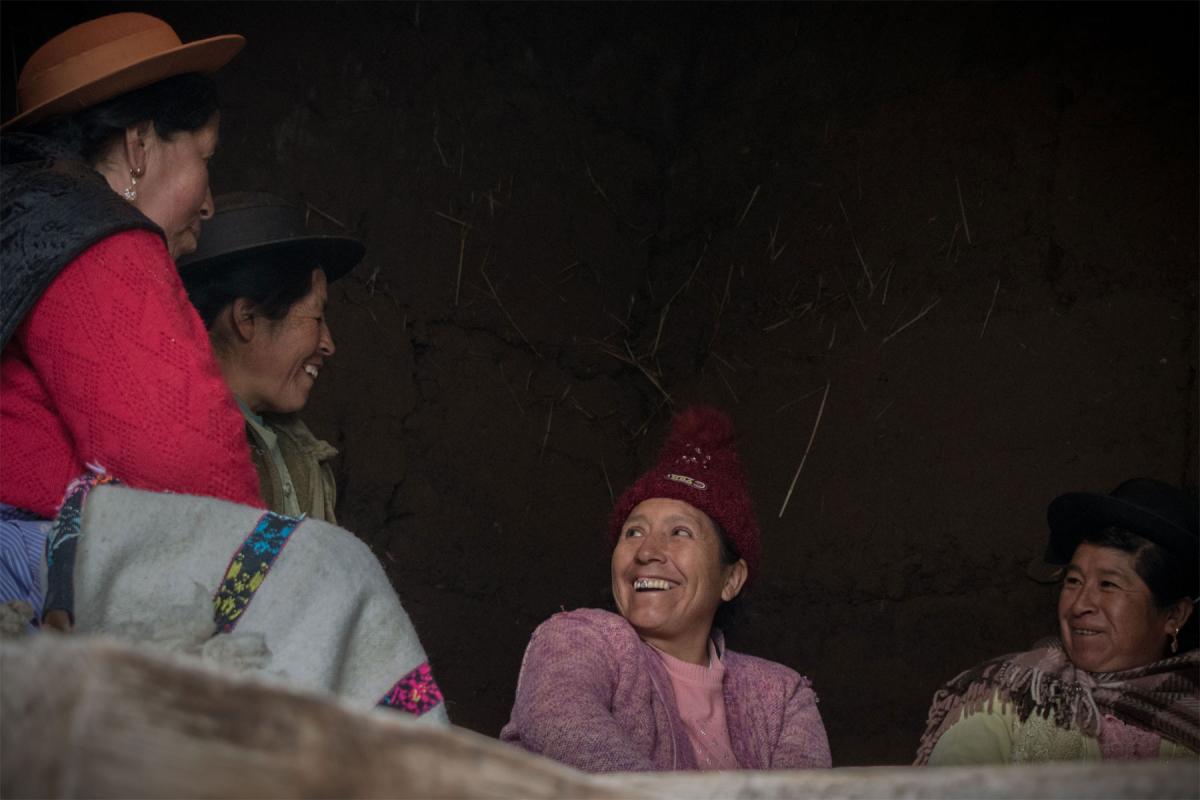
LL: In the film, we see the women peeling potatoes and herding sheep while they share their past experiences. How important is this message of female solidarity which is conveyed throughout the documentary?
PWR: Right from the very beginning, it is clear that female solidarity is at the heart of this story. The close ups which zoom in on these intimate conversations between the women convey that the film is situated on a very personal level and that there are no secrets. The women wanted the documentary to be structured around these conversations.
At the start of the documentary, when the women hear that Magda has returned to Manta after many years, the women go and visit her to console her. The four childhood friends share their common grievances and their distrust and resentment towards men which impedes them from even loving their own husbands and sons.
Despite all that they have gone through, I perceive Magda and her friends to be strong women. At the end of the film, as they are leaving Manta, they speak of their aspiration to return with new dresses, with a smile on their faces and with a renewed sense of empowerment both as women and as victims. They want to clear their names and show the town that they were not the soldiers’ girlfriends. Rather, they were young girls who were unable to defend themselves when the armed soldiers came to assault them. They had to stand completely alone as even their own families turned their back on them. The victims were blamed for seducing the men and once they gave birth, their children were disowned by their families for being ‘soldiers’ children’: the lowest of the low. At eighteen or nineteen years old, they established themselves in a different city to bring up their children alone.
Although they will never be able to get over their trauma, the women can process it and learn to live with it. That is why I always used to say to the women “we don’t want to see you crying on camera”. They managed to hold it all together and after we filmed the scene in which they discuss their thorny relationships with their husbands and sons, there was an explosion of tears. However much we comforted the women, we just couldn’t stop the tears from flowing.
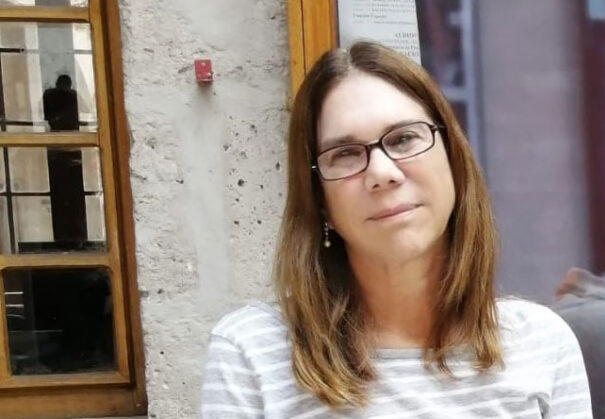 Patricia Wiesse Risso
Patricia Wiesse Risso
LL: Many men and even some women say that the victims purposefully seduced the soldiers and that they are only denouncing them now in order to gain compensation. On the other hand, Don Ciro (the former registrar of Manta) declares his unconditional support for the women and agrees to speak during the trial. It is clear that the opinions in the town are very divided. How did the residents of Manta react when the documentary was released? Has the documentary changed how Magda and her friends are perceived in the town?
PWR: It is worth noting that the vast majority of the town believe that the women were the soldiers’ girlfriends and Don Ciro is therefore an outlier. There are many myths surrounding the human rights violations starting with the economic myth. Once the Truth and Reconciliation Commission (TRC) was set up, the victims were promised both financial and symbolic reparations. The financial reparations amounted to around 2,700 US dollars per family which is nothing considering that in some households, several family members were disappeared. However, in Manta, the residents exaggerate the facts by saying that the victims will receive 27,000 US dollars. It’s like Chinese whispers. So, the residents started to say “we’re all victims of the Shining Path and the Peruvian army in this town. So why can’t we receive 27,000 dollars too?”.
Before the internal conflict, life in Manta was very different. However, fractures started to form beginning with the tensions between the Evangelicals and the Catholics and these divisions widened once the conflict began. These economical myths are characterised by the underlying psychological myths created by the collective memory of violence. This is a town that is frozen in time. When Magda returns to Manta after fifteen years, nothing has changed. This means that the trauma, the negative sentiments and the bad energies are also frozen in time.
I don’t know how the documentary will be perceived by the residents of Manta and whether it will change their hatred towards the women. Due to the pandemic, we haven’t been able to show the film in cinemas yet and we have had to stream it online, starting with the Lima Film Festival. This means that the film has only been shown to urban Peruvians. The Internet connection in Manta is very poor and the residents don’t own computers through which to watch the documentary. The four women have all seen the film and they are happy with it. Madga’s daughter helped with the filming and luckily she was able to put the documentary on her computer so that Magda could watch it. However, the women get tired so they had to watch it in parts and take breaks. I don’t know whether this is because they’re not used to watching this kind of film. It might also be emotionally draining for the women to watch the whole documentary due to their trauma. What I do know is that during the filming, there was a very positive relationship between the women and the film crew so everybody was happy.
We have won a prize from the local Ministry of Culture so next year, provided that the pandemic subsides, we will bring the film to the provinces and show it in universities and cultural centres. We will then be able to reach the Quechua-speaking audiences in the remote mountainous areas of Peru. Our country is incredibly divided between the urban residents of Lima and the provinces. The majority of people living in the capital still perceive indigenous people like the women in the film to be second-class citizens and racism remains extremely prevalent. Apart from the film festival goers who see the world through a similar lens to us, the urban governing class in Peru is not interested in the trial and the first trial was even cancelled in 2016. Then the pandemic came and the women are finally attending their second trial this month. They have to deliver their testimonies via Zoom all alone without any psychological support. If they are declared innocent, there will be a campaign to spread the verdict but their stories will probably fade from people’s memories after a few days.
LL: Since the majority of the dialogue is in Quechua and there is no narrator, it seems that as the director, you are wearing a cloak of invisibility throughout the documentary! Can you tell us a little bit more about these cinematographic decisions?
PWR: Most Quechua women in Manta speak Quechua as their mother tongue and they only speak a very broken Spanish. However, after Magda and her friends moved away from Manta when they were young, they established themselves in Spanish-speaking cities. They therefore speak Spanish very well and this is the language that they use to communicate with the authorities. However, they always speak among themselves in Quechua and switch to Spanish very briefly on occasion if the right word doesn’t exist in Quechua. They always use Quechua to discuss very personal issues or to make jokes among themselves. I didn’t give the women any clear instructions regarding which language to use. I wanted them to speak in whichever language they felt the most comfortable and I said “let’s see what happens”.
In terms of the narration, I personally don’t like voiceovers in documentaries as they feel very formal. Since I wanted this documentary to be framed around very intimate conversations, I didn’t believe that I [as someone from Lima] belonged within the dialogue or in front of the camera. I maintain that people should be able to tell their own stories and that documentaries should be structured around how they wish to present their own narratives.
LL: The documentary will be shown at the virtual Human Rights Watch Film Festival this week which is interesting considering that you have experience working in the field of human rights and communication in rural settings. What is the importance of this network between the director, human rights NGOs and the victims?
PWR: In my eyes, the Human Rights Watch Film Festival is the ideal platform from which to share our documentary given that those who attend the festival will have the necessary sensitivity to understand the documentary. If it wasn’t for my connections with the IDL, it would have been impossible for me to have accessed the paperwork and reports from the trail as well as the photographs of the armed soldiers and the military base that are projected during the documentary. Due to the closed nature of the trial, I was privileged to have these contacts and to be able to access this information during the research and planning stages of the documentary. We also have connections with the Museo de la Memoria (Museum of Memory) and we are going to show the film there in person once the lockdown restrictions are lifted. We have a very small and tightly-knit network of individuals behind the documentary.
To watch the movie visit https://ff.hrw.org/film/mujer-de-soldado-soldiers-woman


